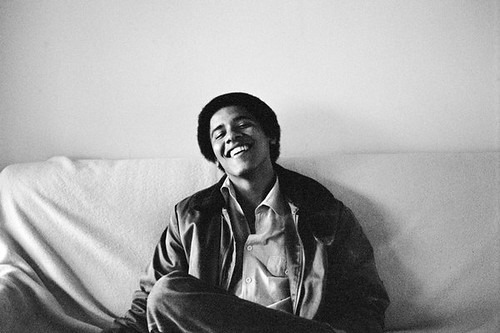
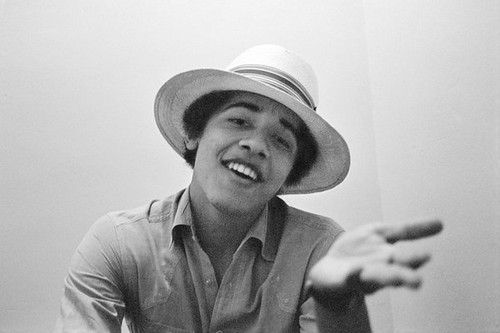
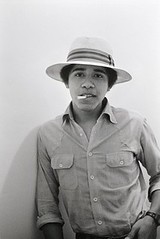
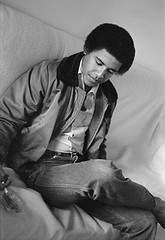
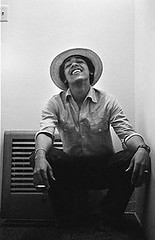
and so a forgotten photoseries of a 20 year-old "Barry", who might otherwise be just another college student, becomes a humanising foil for the Barack Obama the world sees today. first run in Time magazine, this series by photographer Lisa Jack is a quiet, conversational set of photographs of a young man with 'a bomber jacket, flared jeans, a pack of cigarettes and a Panama hat he thought would look “cool"'. sitting down, lounging, hunched, cigarette smoke twirling upwards: a quiet world away from the upright, electric persona we saw in 2008.
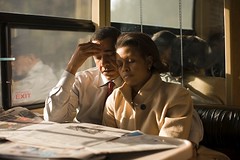
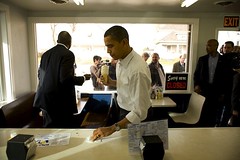
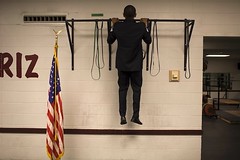
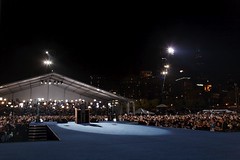

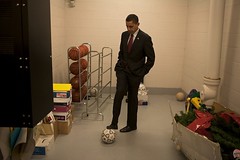
the series reminded me of another reportage that Time, incidentally, ran in the run-up to the elections, by Callie Shell. she traces the behind-the-scenes path of Obama during his campaign, ending with his victory speech at Grant Park. like in Jack's series, we see a human-sized Obama: asleep, doing pull-ups, reading the papers, and even see the bottom of his worn soles. but one is also aware of the remarkable distance between the two sets of photographs, even without the dates. Shell's work has a polished tone even as it looks under the carpet, whereas Jack's series sits casually, almost awkwardly.
perhaps Sontag is right, and no photograph can ever speak by itself. for every photo of Obama there are a host of pre-dispositions on the part of the photographer, and then the viewer. but i believe there are still some comparisons we can make, to some degree of usefulness, between the television image, the two reportages, and the man himself, whoever he is.
credits: Barack Obama: The Freshman, Lisa Jack;
Barack Obama: Road to the White House, Callie Shaw

No comments:
Post a Comment